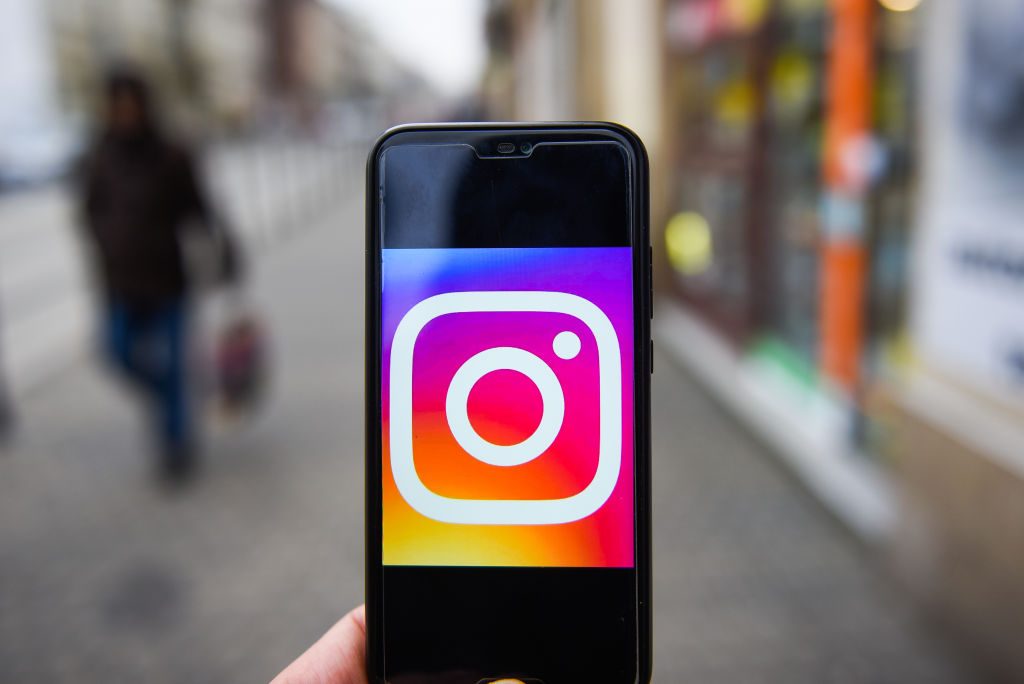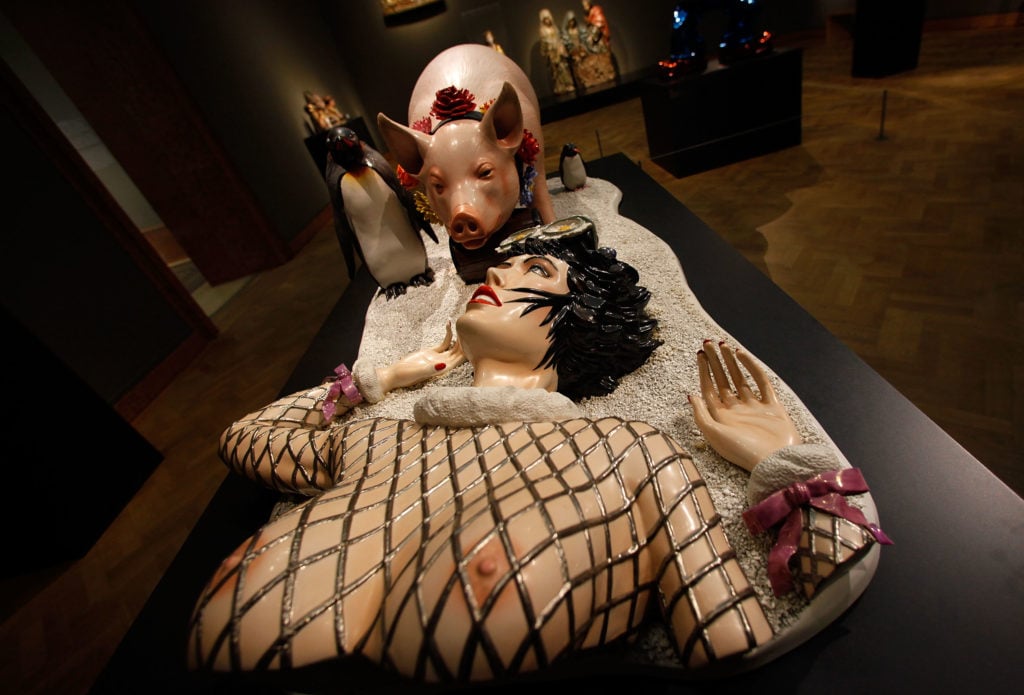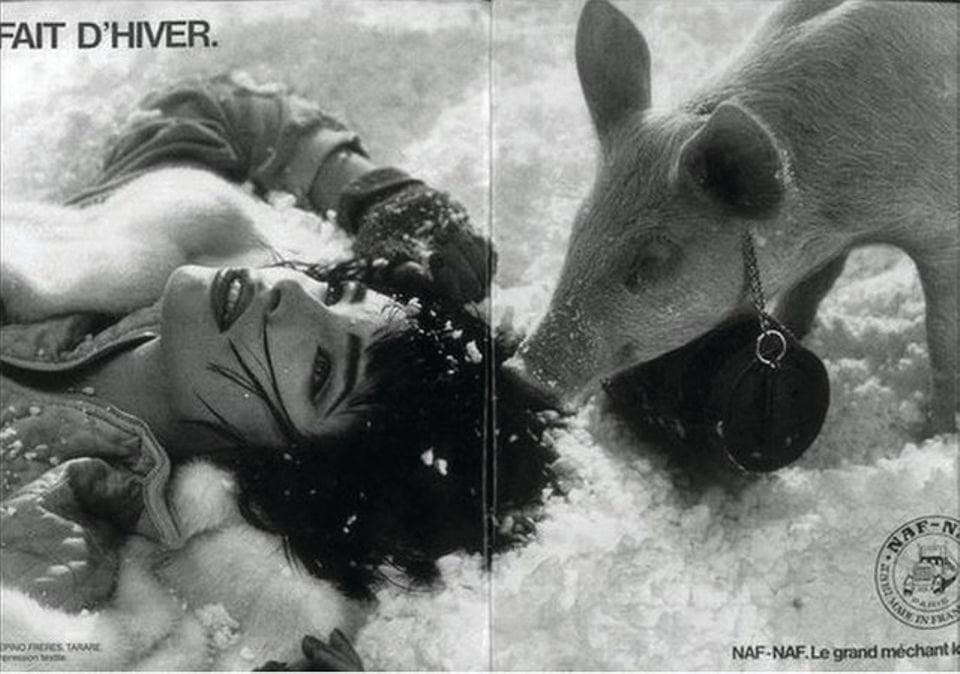Works of Art Make Rules Rules Do Not Make Works of Art
Have you ever wondered what your rights are as an artist? At that place's no clear-cut textbook to consult—but we're here to aid. Katarina Feder, a vice president at Artists Rights Lodge , is answering questions of all sorts about what kind of command artists have—and don't have—over their work.
Practise you have a query of your own? E-mail [email protected] and information technology may go answered in an upcoming article.
I'1000 an creative person and I'm thinking of making an NFT. Are NFTs governed past copyright? Also, what's an NFT?
Reader, you lot were the 17th email most NFTs in my inbox on the day you sent this, so you lot know what that means: You win two tickets to a Rihanna concert at the Barclays Center! And, of course, an reply in this calendar month's cavalcade.
To my astonishment, NFTs (also known every bit non-fungible tokens) have captured the imagination of people around the earth. NFTs tin can exist made from practically annihilation digital—songs, Tweets, whatever. Using blockchain technology, NFTs return these infinitely reproducible items—like the song y'all listen to on Spotify ad infinitum—unique.
In other words, while anyone can run into and easily download the video clips that constitute Grimes' digital artwork (of which she sold a casual $v.8 million worth through Maccarone ), they would have to buy the individual, impossible-to-pirate, express-edition NFT version if they wanted the stardom of owning the original, collectable version.
James Tarmy at Bloomberg wisely pointed out that this is essentially the same manner the market for photography already functions, with an artist-made print fetching a price that is exponentially higher than a affiche of the aforementioned epitome would. Past way of comparison, I'll remind y'all that a frenzy for tulips in the Dutch Commonwealth in the 17th century at one point made the flowers more valuable than golden . The onetime aphorism is true: Scarcity actually does create value.
I've been approached by many people interested in collaborating on NFTs because my firm, Artist Rights Order, is a clearinghouse for artist copyrights. Nosotros represent over 122,000 artists and estates worldwide, so if y'all want to reproduce an artwork for a catalogue or brand a t-shirt for your museum gift shop, the request frequently flows through united states. And the dynamic is the same for an NFT as it is for a t-shirt: the copyright for an artwork rests with its creator (unless the creator has been dead for 70 years).
If you're an creative person, that means y'all tin make an NFT of your own work free and articulate. If you want to make an NFT of an artwork that's not your own, y'all demand to go to the source for permission.

Dollhouse at Musée Grobet-Labadié Virtual Tour © Courtesy of Manifesta xiii
Our museum is still closed and as we consider the long-term effects the pandemic will accept on museum visitation, we would like to add together more virtual components to our exhibitions, including 3D walkthroughs and extended online tours. How should we approach licensing in this situation? Should we seek permissions for reproductions in the same mode we would for a print pamphlet?
Showtime, allow me thank you for your caution. We're keenly aware that our partners in the museum world are in need of admission funds, and information technology's smashing that you're encouraging visitors to return at the pace that's right for them, and for everyone else.
Museums have gotten increasingly creative in recreating their shows for viewers at dwelling house—but y'all're correct to wonder about the right to reproduce content because, as readers of this column know well, ownership of an artwork rests with its creator rather than its owner. Annihilation you lot're planning needs to be approved past the artist, their estate, or a collective rights arrangement like ARS.
I recommend thinking nigh virtual exhibitions in the same way you would retrieve about reproducing works for print: you need to go to the same people for say-so.
The big caveat here is that copyright endures the life of the artist, plus 70 years post mortem. So if you're a museum with many older works like the Metropolitan Museum of Art , y'all would already be in the clear. Best of luck with this and with your reopening.

Instagram photo Analogy by Omar Marques/SOPA Images/LightRocket via Getty Images.
How should y'all deal with people who share your work on Instagram only don't tag or hashtag you (specifically, influencers who make money from the site)?
I'yard sorry to hear you are having this problem. Instagram has opened many doors for many artists—but of grade, nothing comes without a price. We get this query from artists fourth dimension and time once more.
Let's start off by discussing your rights. 6 photographers are currently suing Buzzfeed over its use of their images of this summer's Blackness Lives Affair protests. But Buzzfeed's actions may, unfortunately, be adequate thanks to what one judge called " a non-exclusive, fully paid and royalty-free, transferable, sub-licensable, worldwide license " that is implicitly granted by posting to Instagram.
That state of affairs sounds a scrap different from your problem, however. It seems that higher-profile users are either passing off your own Instagram photos as their own or photographing your piece of work without giving y'all credit.
The latter concerns your "display rights" every bit a copyright holder. It'southward a surprisingly tricky consequence because there isn't a ton of example police established here. There are a number of questions to consider: For starters, has the person photographed your work in a style that might be considered transformative due to their own creative input? To what extent is the photograph about your work, and to what extent is information technology nearly the influencer? (If the influencer is taking up more than fifty percent of the prototype past, say, posing in front of your painting, the photograph may be considered more about them than about your work.) Is the image likely to hurt your market? (An argument could exist made that past even unwittingly sharing your work, the influencer is boosting your contour.)
You can see how complicated this gets. For more, allow me to straight you to this lengthy commodity by Herrick , a law business firm that oft works with the art world, about photographing works for catalogues. It'southward a good, if flawed, analogy.
Now for the former scenario: If the person in question is taking your Instagram posts and claiming them as their own, nosotros're in more of a FuckJerry state of affairs . Even there, however, the police is unclear because it'due south hard to bear witness the extent to which the thief benefitted from your specific slice of content. A plaintiff who tried to bear witness Jerry had stolen the epitome for a detail sponsored post dropped his instance in 2019 considering he was, it turned out, " near certainly not the original creator " himself.
Regardless of the specifics, I would try reaching out to the user in question. Mostly, this is a uncomplicated misunderstanding. And in my experience, Instagram is rarely worth a lawsuit, even if you're Kanye West .

Jeff Koons's sculpture Fait D'Hiver (1988). Photo by Ralph Orlowski/Getty Images.
Explain Jeff Koons to me. Sometimes he wins lawsuits, sometimes he doesn't. He just lost one in France merely that hardly helps to explain things. Explain Jeff Koons to me, please, somebody.
First, I'd similar to put forth a personal theory that, from a artistic standpoint, Jeff Koons welcomes being sued. Don't buy it? Koons once "created" framed posters that take been made by Nike, a visitor well known for its rigorous lawsuits confronting infringements . Koons went and so far every bit to call the works "originals," even though they were unmodified. The guy clearly gets off on being a copyright provocateur.
So what makes a successful Koons lawsuit? Your guess is as practiced as mine. The French lawsuit you cite in your question centers on Koons's Fait d'hiver. The image is copied from a mag advertisement, admitting a very French one , in which a grunter sniffs a gorgeous woman in the snow. Sounds familiar? Consider Flinch v. Koons , which nosotros discussed last year . In that case, Koons took a copyrighted image of a woman's leg and feet that he found in an American effect of Allure .

Elisabeth Bonamy, Franck Davidovici, and William Klein's "Fait d'Hiver" advertisement campaign for Naf Naf (1985).
The Flinch example found Koons guilt-costless of copyright infringement, with the American courtroom arguing that the original epitome was, curiously, besides "bland" for protection. This latest suit, which occurred in France, didn't work out for him because the laws in French republic tend to favor creators more than those in the States. It besides couldn't take helped that everyone's a bit down on him over in that location at the moment . Mon dieu , indeed.
Follow Artnet News on Facebook:
Want to stay ahead of the art world? Subscribe to our newsletter to get the breaking news, middle-opening interviews, and incisive disquisitional takes that drive the conversation forward.
Source: https://news.artnet.com/art-world/know-your-rights-march-nft-1954800
0 Response to "Works of Art Make Rules Rules Do Not Make Works of Art"
Post a Comment